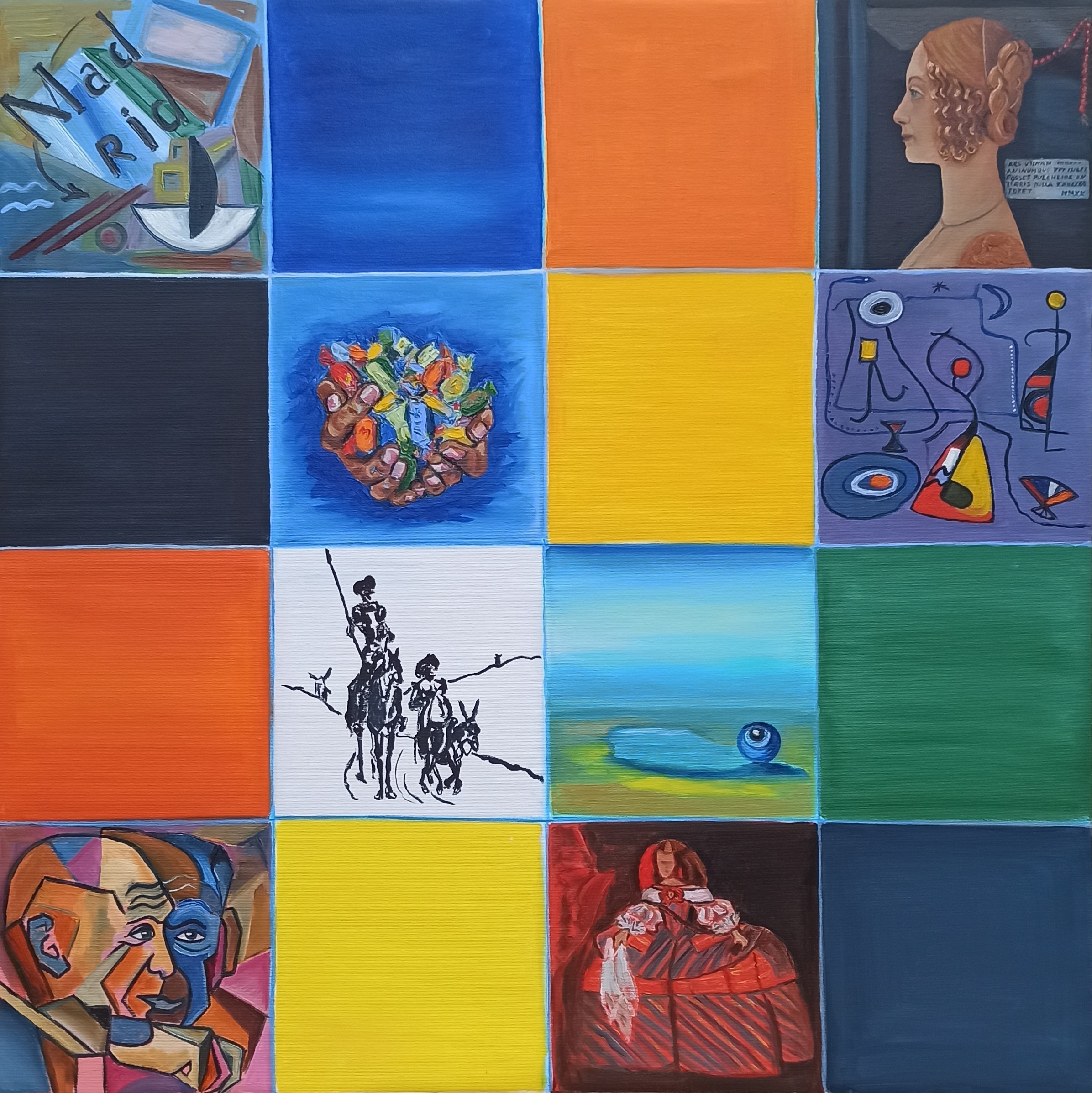Ode to Joy
Memory Сells, Ode to Joy, 2020, 80x100cm, oil on canvas
This is an amazing journey into the depths of my memory, this was my first trip to Europe. I want you to feel this joy and this kaleidoscope of cities that have changed me and made me develop for 12 years.
Budapest is music that sounds, violin, unforgettable Czardas, this is a dance!
Vienna is the cultural capital of Europe, thanks to which I began to study the history of art and draw! The first impression and love is an acquaintance with the work of Gustav Klimt, and then with Friedrich Hundertwasser, this brightness of color, joy and nature was imprinted in me and was realized much later.
Paris is love, this is romance, this is French chanson and French that I began to study!
Brussels is a multilingual capital, and it is not without reason that the EU headquarters broadened my horizons. René Magritte and Paul Delvaux, this is what I now associate with Brussels.
Amsterdam is the Venice of the North, fabulous houses, the Northern Renaissance, this is a surprise, these are the highest technologies in underwater construction.
Traveling changes us, helps us grow and develop. Travel is the best education in the modern world and I really want them to return to our lives !!!!

Travel to Portugal
Memory cells. Travel to Portugal, 2020, 80x80cm, oil on canvas
The idea of painting came about after visiting Portugal. I was so inspired by this bright, cheerful country that I tried to write in the style of the traditional Portuguese Azulejos, which is a painted clay tile, most often square in shape, burnt, glazed, measuring 14 cm by 14 cm.
These are small plots, my memories of this amazing country. The idea was also to fill the picture with light, color, the joy of life, art, and so that each storyline echoes the neighboring one, and that when looking at the picture you also wanted to go there.
It’s also my reflection, the dialogue with Portuguese artists – Ana Vieira (1940-2016) and its installation “Ambiente – Sala de Jantar” (“The Environment – the Dining Room”), as well as Almada Negreiros (1893 – 1970) with whose work whom I met in the museum of Galust Gyulbenkyan. This is an art museum in Lisbon, which stores a collection of European fine art, as well as a number of monuments of oriental and ancient art, assembled by businessman Galust Gyulbenkyan. It was opened on October 2, 1969 according to the will of a billionaire and is subsidized by a fund named after him.
“The way Gulbenkian used his fortune throughout his life, and the way he disposed of it in his will, demonstrates his understanding of the social function of wealth and its corresponding obligations,” they will write in Portugal 20 years after the death of Galust Gulbenkian.

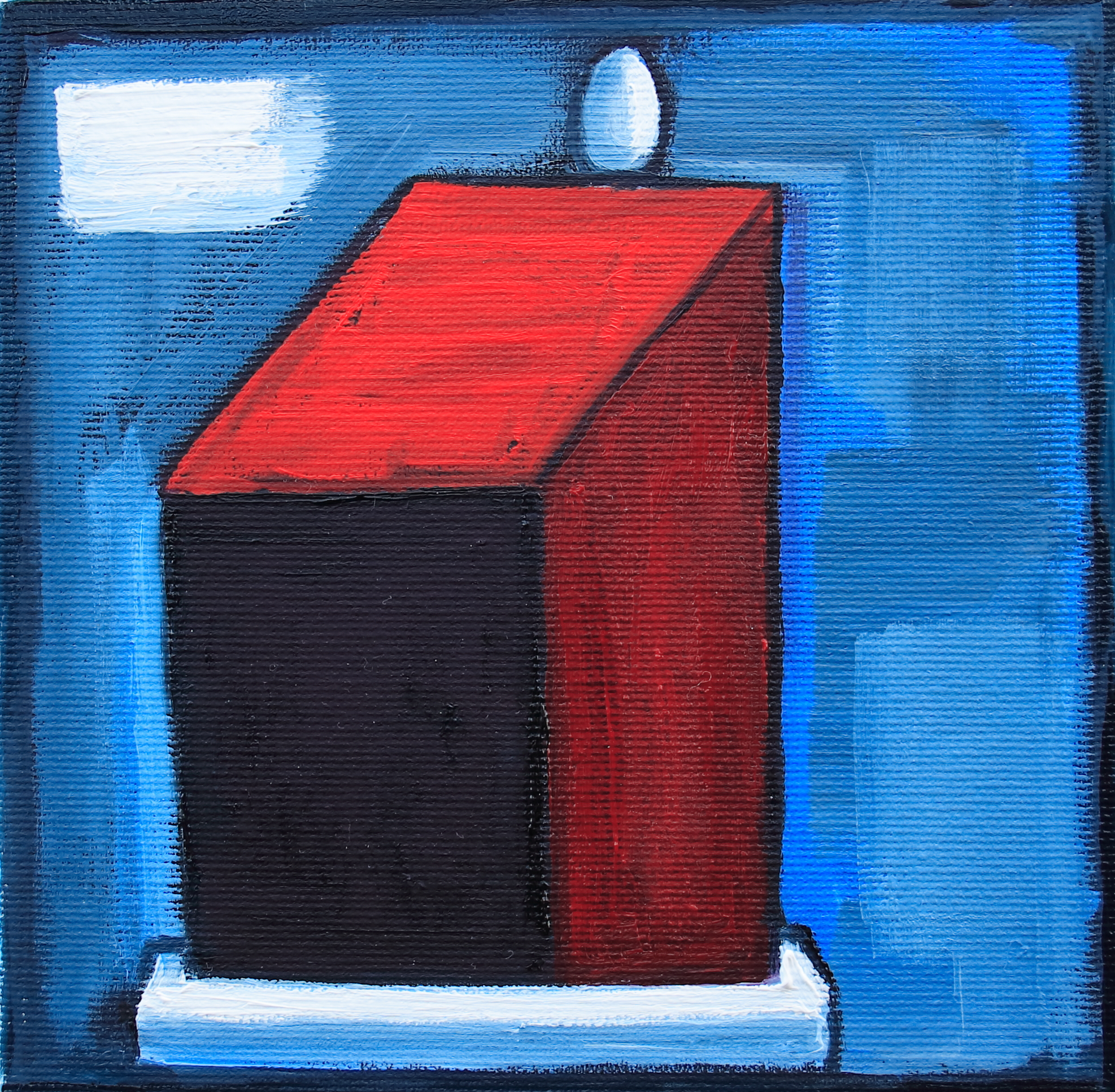
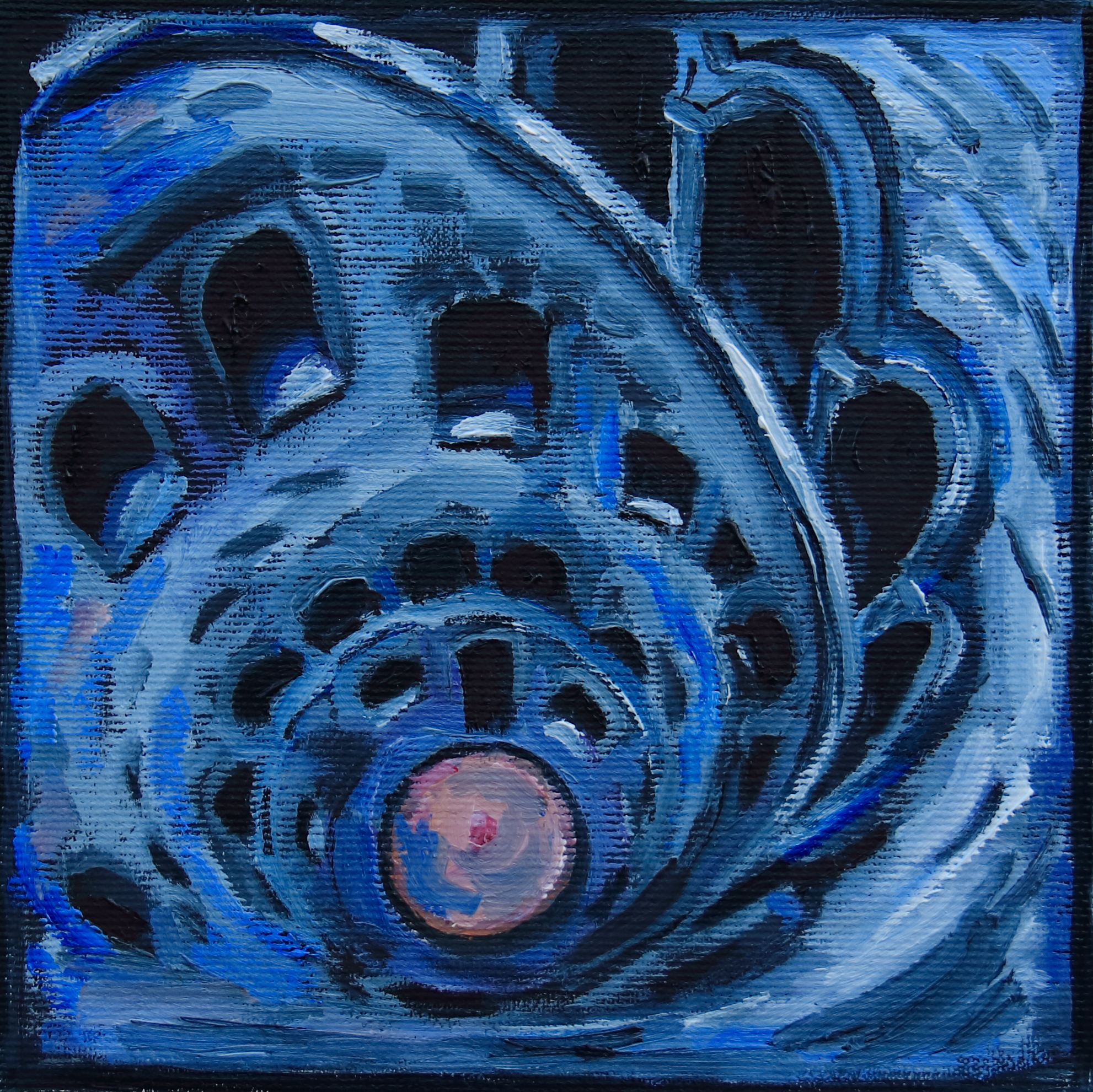



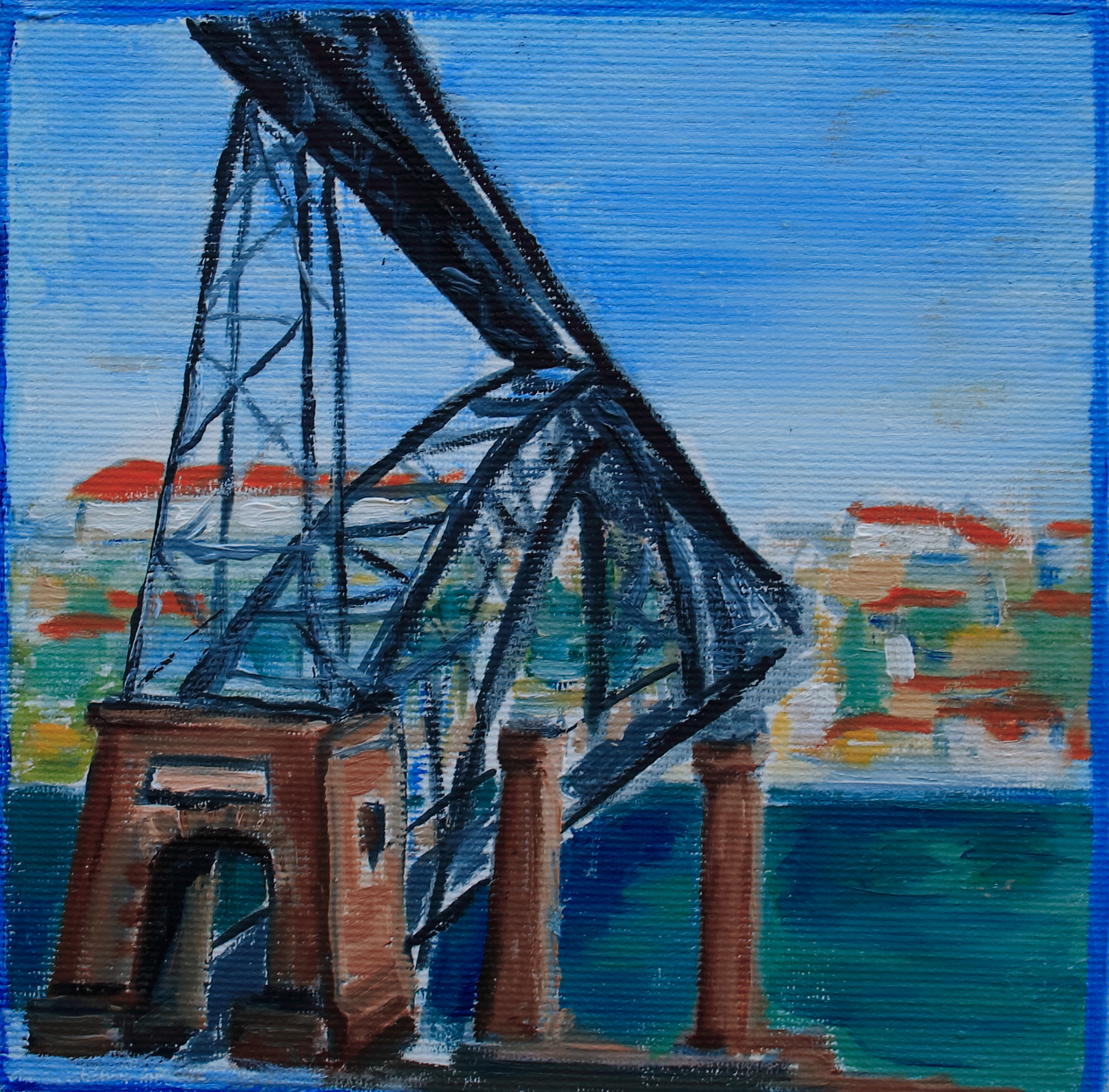
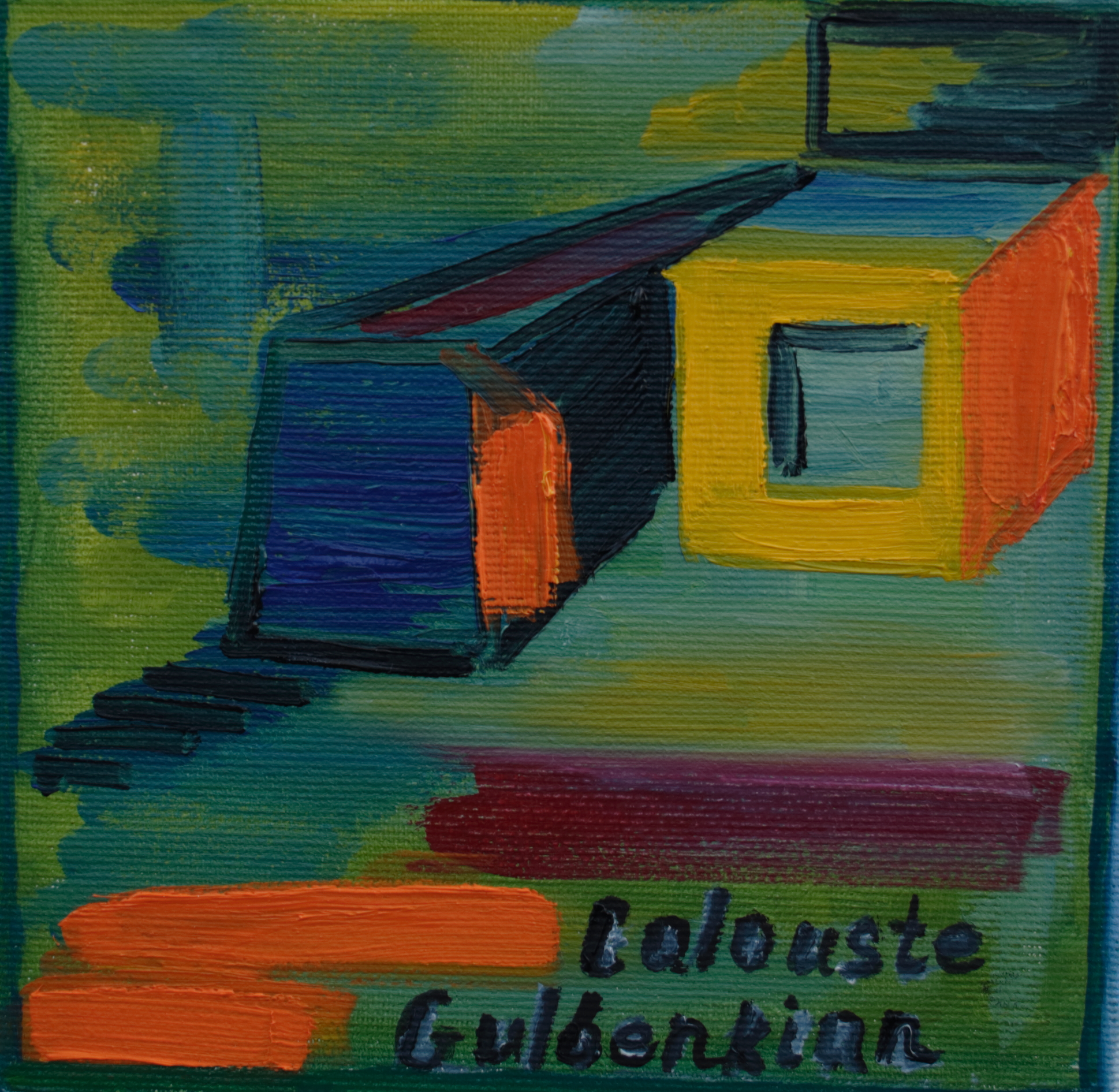





Family
Memory cells. Family, 2020, 80x80cm, oil on canvas
Family – how much significance and love is present in this word!
This is the source of the most intimate human values. This is a school of love, a school of morality, spiritual values.
If a person speaks about home as a heart, then family is his soul, his thoughts and feelings.
Unfortunately, usually don’t express our beloved relatives our feelings to them. How often our mind is full of their problems.
Now we live in a specific period when everyone is scared by the virus. The pandemic is spreading and it seems that the quarantine will last forever.
What else, but quarantine, would obligate us to slow down and reflect.
What is really important to us? Money, career, success? Or the health of our beloved family members, the warmth of sincere conversations, the unconditional love of relatives.
During unforgiving moments you begin appreciating the time spent with darling people. The memory cells themselves begin to expend out happy moments that you want to capture for centuries.
In this picture, I want betraying that fullness of warmth feelings, love overwhelming my soul. Something it unites four generations of completely different people. Profession different, temper, age and experience. At the same time, they stay along each other wonderfully.
The family foundation values unite everybody: care, respect and, of course, unconditional love!
The Universe has once again realizing the true value of human being. Thanks!

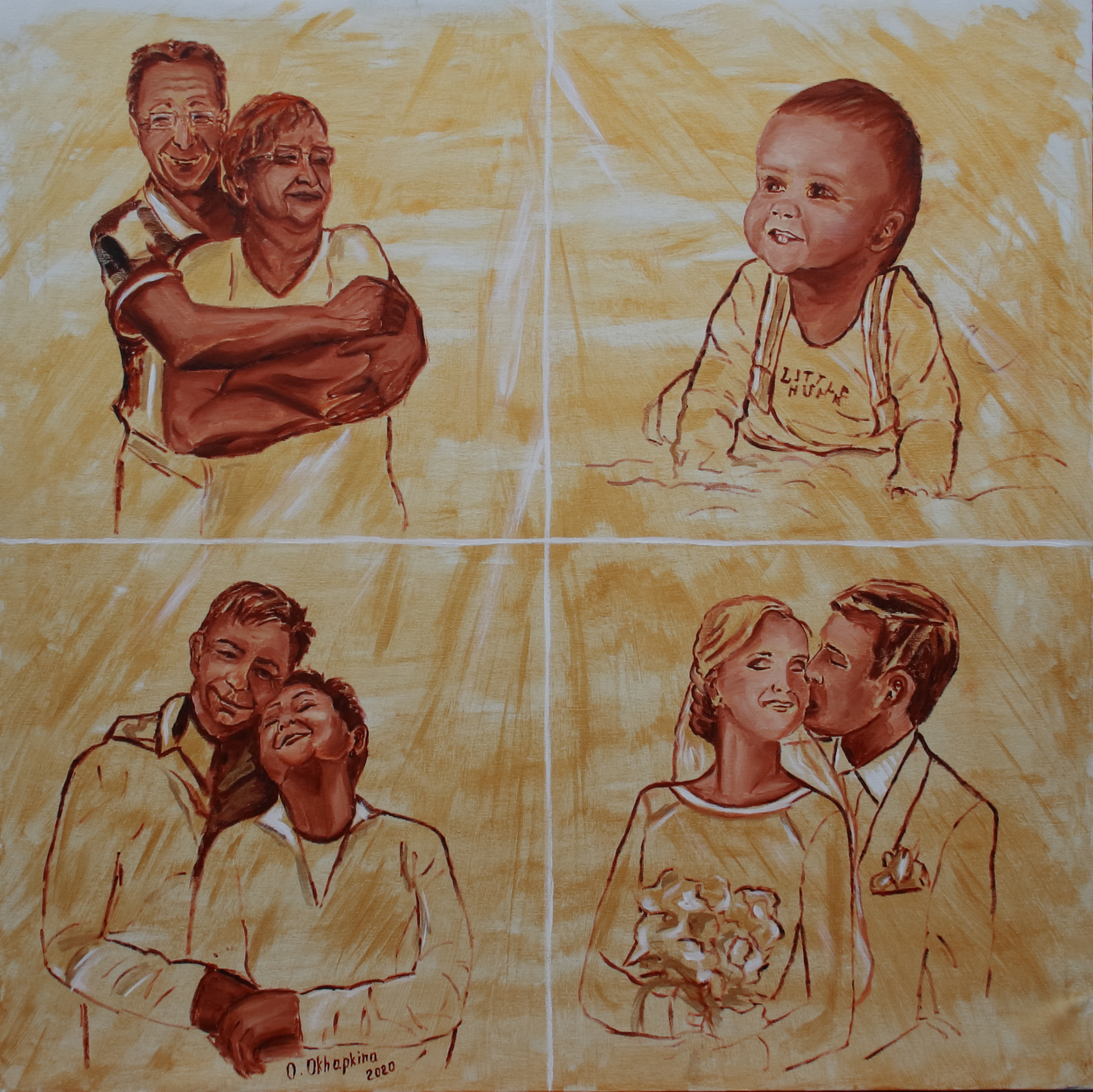
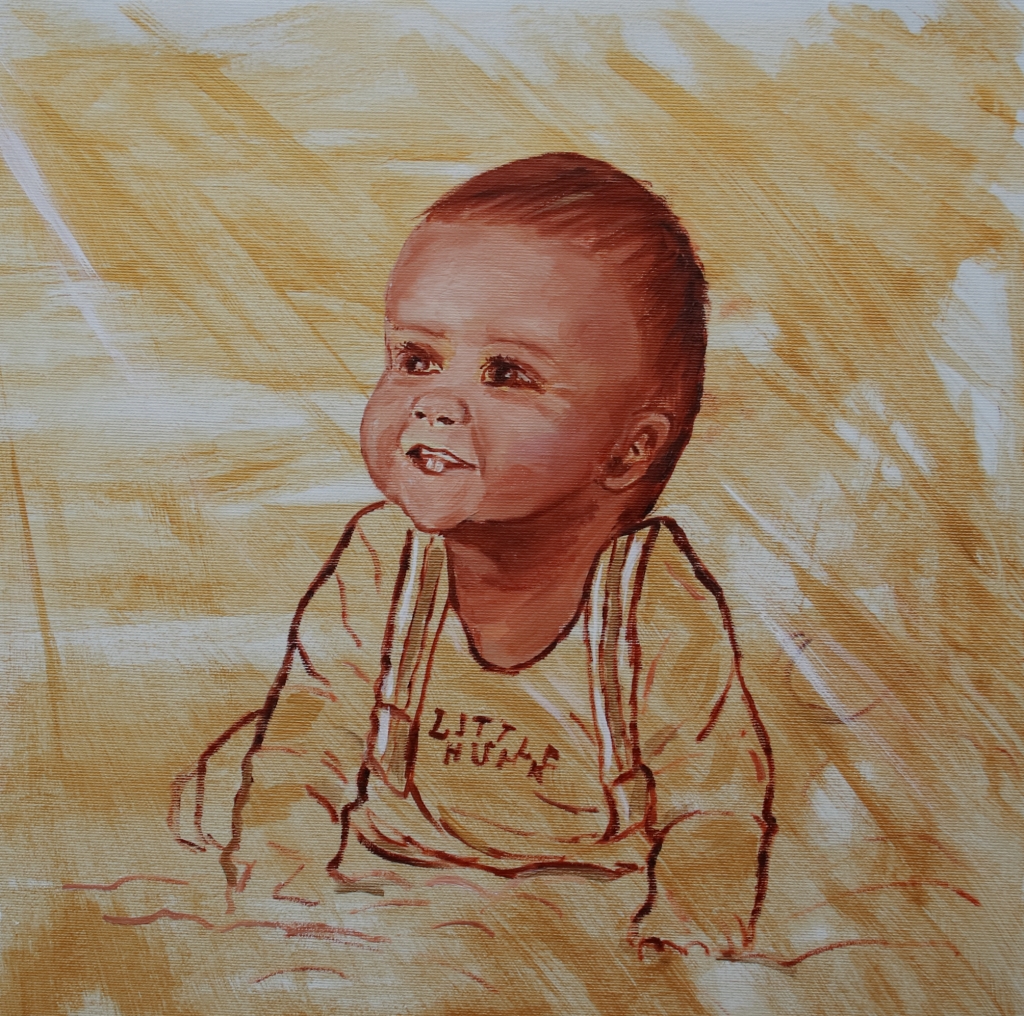
Dreams
Memory cells. Dreams, 2020, 80×80 cm, oil on canvas
Memory from childhood have not disappeared it is in our soul. I have been brought out in the family of the border guard. We have travelled many times. And being lockdown, it was impossible for me to accept the movement limitations, but during quarantine only the memory about travelling has aloud me to start new series “Memory cells”.
Our memory is very selective, it is interesting to discover the memory markers. Memoirs are multiple: first kiss, baby smile, taste of the childhood, smell. Why do we remember only special moments of our life?
Being isolated I have seen the installation of Portugal artist Ana Vieira (1940-2016) and her “Ambiente – Sala de Jantar”. This is once more demonstrated how informative might be the artwork and how can you revise it in the today live moment. This has been my indication paper which you put down into the water glass and you see the specific of the chemical reaction. Painting “Dreams” has been this chemical reaction. In the close room the child is dreaming about the sea. Might be this was me to dream about the sea, I have seen it for the first time in my 30th.
Should it be only dream – it depends only from us, it had appeared not. The whole world has made pause and only now they start the attempts to organize the normal life. And now the question arises: to evaluate what he has it is necessary to lose? How happy you are to have freedom to move, freedom to choose, freedom to say, freedom to do what you want. When you are free to walk along the streets, travel to different countries, visit the seashore, attend the concert, meetings, events.
This is a dream about the sea and freedom!!!


All roads lead to Rome
All roads lead to Rome, 2020, 80×80 cm, oil on canvas
This work was influenced by my teaching: Materials and Technique, New York School of Abstract Artists.
Barnett Newman and Mark Rothko influenced in terms of color and transparency, Willem de Kooning and Jackson Pollock added expression, Agnes Martin and Ad Reinhardt silence and tranquility, Yayoi Kusama that everything in the world is based on love and that anything is possible!
All roads lead to Rome is about what you still come to regardless of the chosen path of achievement.
In fact, initially this expression arose as a rather dry statement of the fact that indeed all the roads that were built in Ancient Rome led to its capital, or rather, to “foro romano” – the Roman Forum, the market square of the city, and it sounded on Latin as “Omnes viae Romam ducunt”.
However, the artistic word still has a greater power of persuasion than naked statistics, and this phrase became really winged when it was used in his fable “The Arbitrator, Brother of Mercy and Hermit” (1694) by the famous Jean La Fontaine, French poet and fabulist, having put into it the meaning “you can reach one goal in different ways” (“Tous chemins vont Rome).
It is possible to start over and go your own way.


Deep inside
Memory Cells, Deep inside, 2020, oil on canvas, 80x80cm
“Inter space and time… one thing… is not absolutely understandable. Brain specifics reflect the image of the world. And in the brain the time is transferred into space. In the brain cells many things are recorded which appeared to be past and it is distributed in the brain space and it is possible to transfer into the time structure during reconstruction, anyone, including past performance. You dig more and more, reach your childhood in the brain space.” This is citation of the Bechtereva N.P. “Brain magic”.
I have started online studies during 2020 quarantine, new facilities have opened. I have studied the course of the modern arts museum of New-York “In the Studio: Postwar Abstract Painting” and “Modern Art & Ideas”. This has given me to express myself in the New-York school of abstract arts and this being the proceeding of my memory markers studies.
My painting “Memory Cells. Deep Inside” means that in the human being in the danger minute returns to his primary instincts: self-preservation, tension, fear, doubts, defend of children. Deep inside we have not left our ancestors far away. If you dive deep, push the bottom and swim out, if you will throw away everything unnecessary there will only the basis simple form and things, there will appear trust, aspiration, love and happiness.
I am sure that humankind will coup pandemic and will be happy.
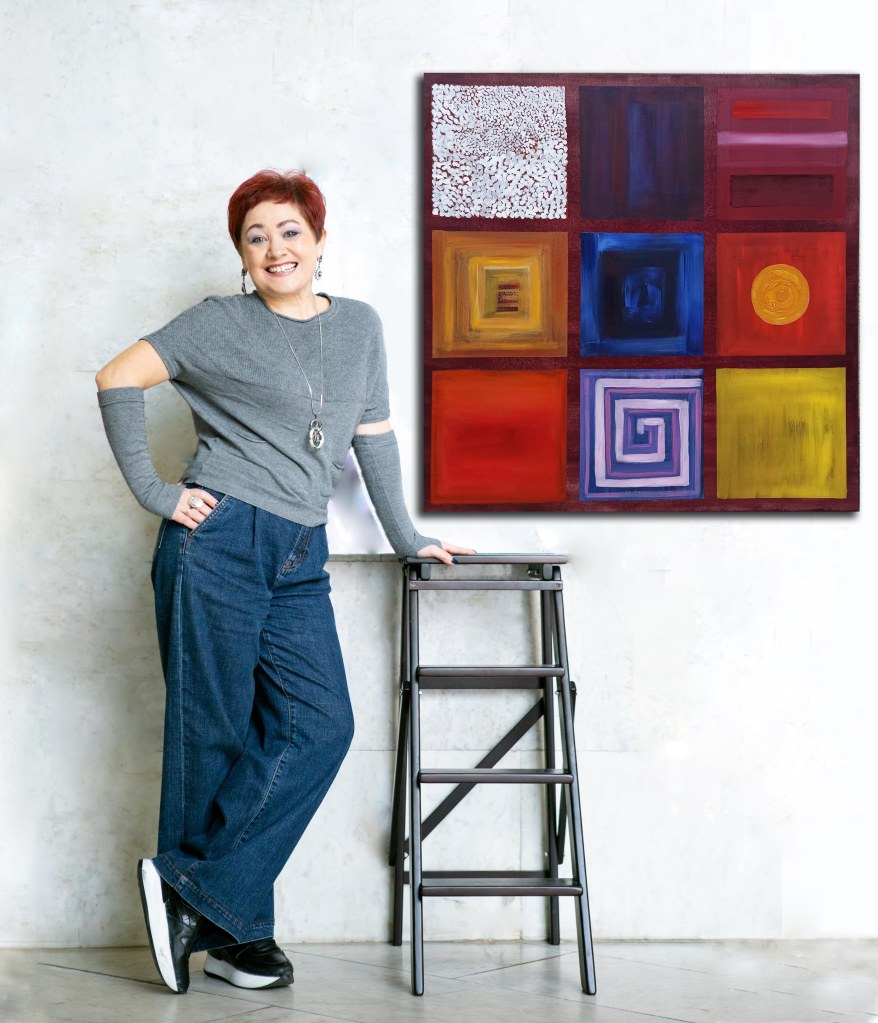

Egypt
Memory Сells. Egypt, 2020, acrylic, oil on canvas, 80x80cm
Memory Cells. Egypt / Memory cells. Egypt.
Egypt is not the Promised Land: it is a land created by man day after day, year after year, a work that is renewed endlessly, where the creations are mixed with the image of the Creator. There are no sharp differences between gods and people: there gods dwell among mortals; their faces are the same human faces or the images of animals that surround them on earth and in heaven. In every piece of the Egyptian land – water and universal, cosmic fire, death and resurrection, human essence and divine essence.
That is why, when I saw one family of Egyptians, it seemed to me that the gods came to life, I wanted to draw them.
The ancient Egyptians were an extremely life-oriented people who largely tried to supplant the thought of age and death. Instead, the concept of life in the afterlife and rebirth was put to the fore.
The thinking of the ancient Egyptian people was not rational – logical, but figuratively – symbolic. There was a magic principle that all perfect, great things are reflected in something small, outwardly nondescript – both above and below, the macrocosm is equal to the microcosm. On this basis, the scarab beetle became a symbol of the rising sun, and the sky could be depicted as a cow. In the same way, it was possible, through symbolic actions and drawings, to influence important processes taking place in the world of the Gods and in the other world. The symbols themselves were attributed to their inherent inner strength, something like an essence or soul.
The ancient Egyptian religion contained a huge number of deities with diverse forms of manifestation. Gods – as, indeed, people – were supposed to have a large number of different qualities of character, so that one and the same deity could be depicted in all kinds of incarnations.
Ankh is one of the most important ancient Egyptian symbols with the meaning of “life” (“immortality”), also known as “crux ansata”. The sign is very simple but powerful. It combines two symbols – a cross, as a symbol of life, and a circle, as a symbol of eternity. Their combination means immortality.
The Eye of Horus is the emblem of the falcon-headed god of the sky Horus, a symbol of the all-seeing eye and the unity of the cosmos, the integrity of the universe. According to ancient Egyptian myth, the moon eye of Horus was snatched out by Set in the battle for supremacy among the gods, but after the victory of Horus in this battle, it grew again. This myth became the reason for the extreme popularity of the Eye of Horus as a warding off evil amulet. The spiral under the eye (shaped like a galaxy) symbolizes energy and perpetual motion.
The Eye of Horus was also associated with healing, as ancient Egyptian physicians often viewed illness as analogous to the battle between Horus and Set.
In mathematics, the Eye had a curious function – it was used to denote fractions. According to one version of the myth, Seth cut the torn out eye of Horus into 64 parts, so his incomplete image symbolizes some fractional number: the pupil is 1/4, the eyebrow is 1/8, etc.
These are my memories, my acquaintance with Egypt, to be continued …



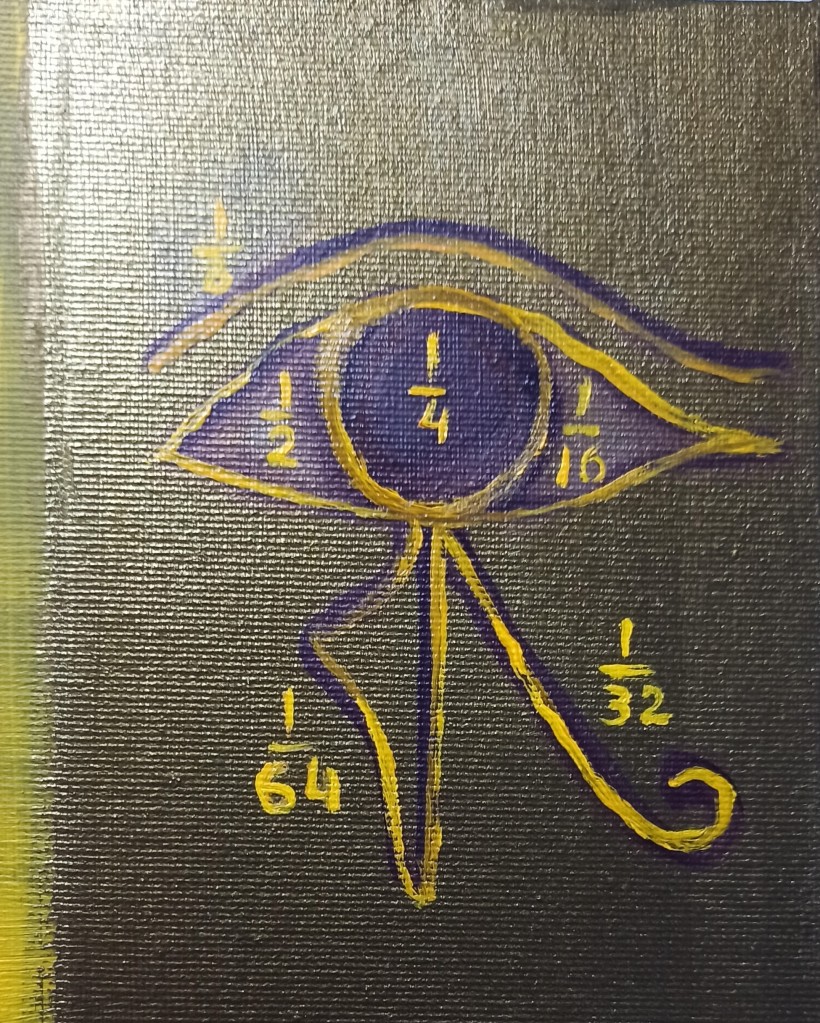
Spain
Memory Cells, Spain, 2020, oil on canvas, 80×80
Polyphony
When I wrote my work “Memory cells. Spain “, the word “Polyphony” flew to me, and this despite the fact that I have never done music.
Polyphony in music is a type of polyphony when several melodies sound simultaneously in a vocal or instrumental work.
Polyphony in literature and painting: artistic diversity, versatility of the work, its complex structure.
A direct hit with my Memory Cells, since each fragment of the picture is an independent party, each fragment written is endowed with its own voice, its own “knowledge of the world.”
But in general, this is a kind of game of mind, intuition and remember!
